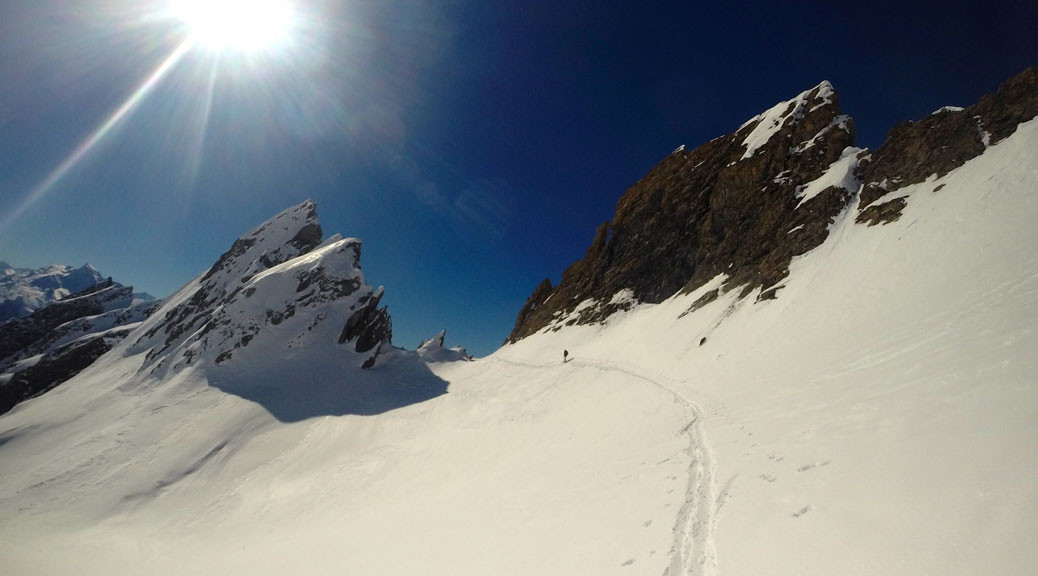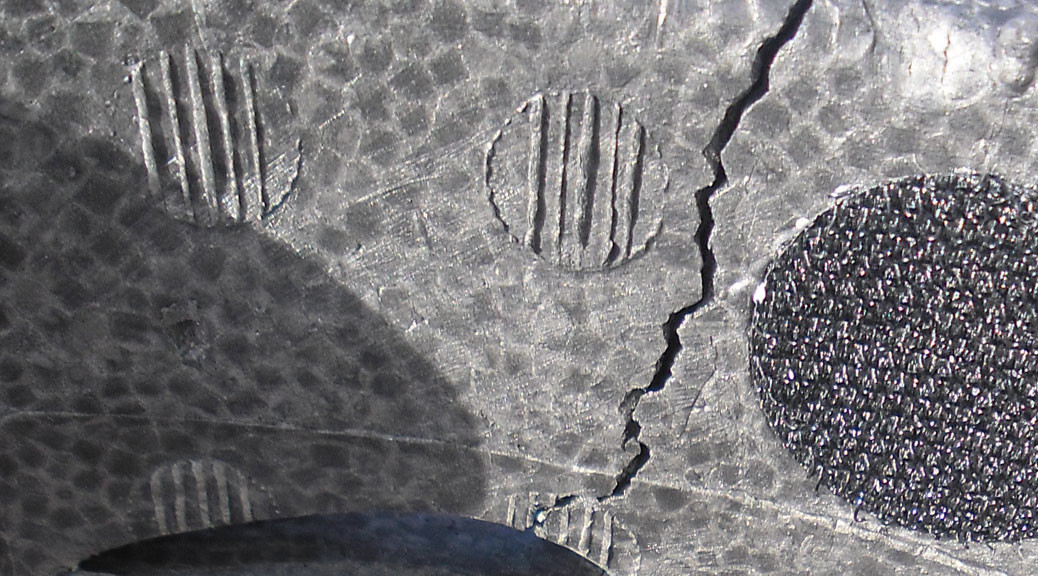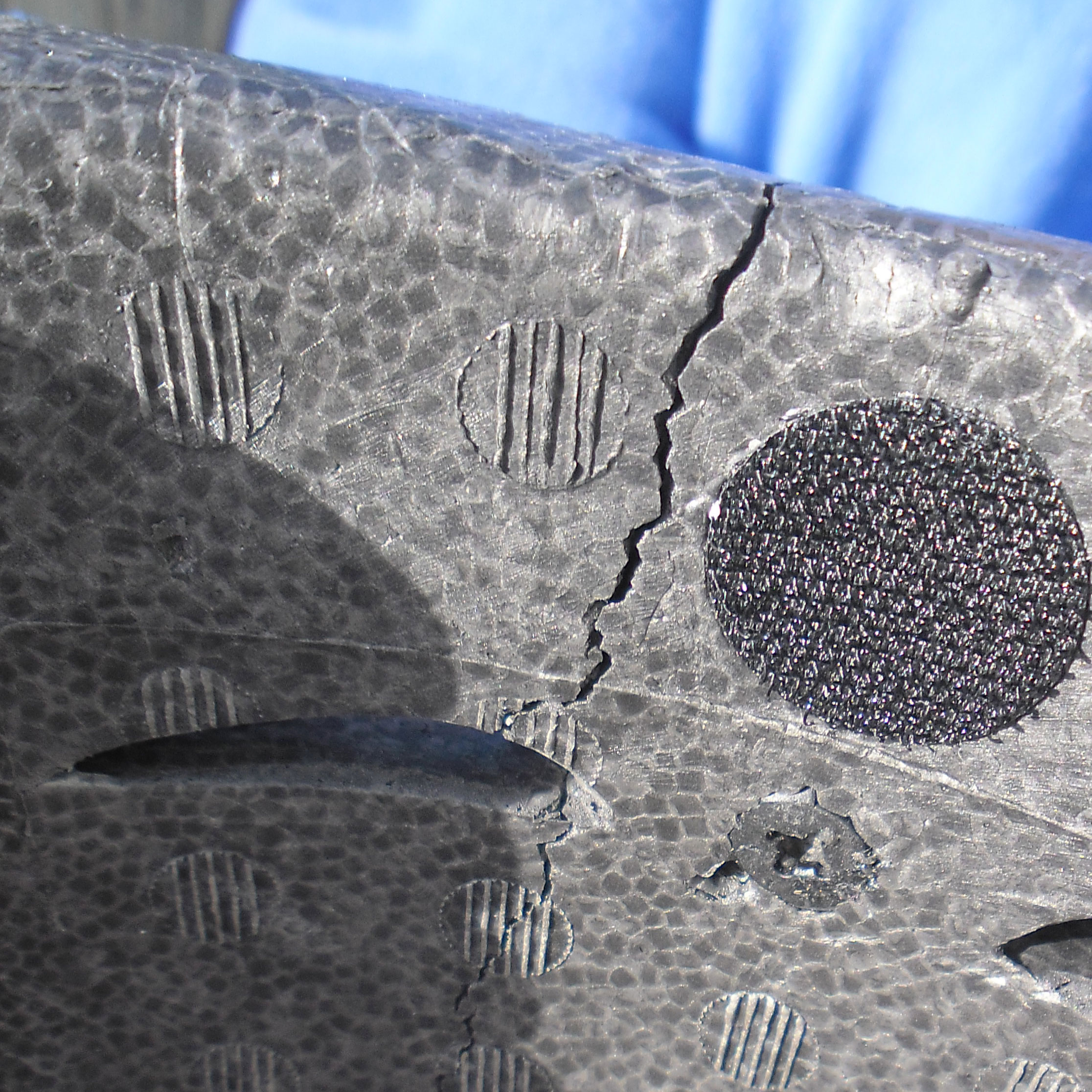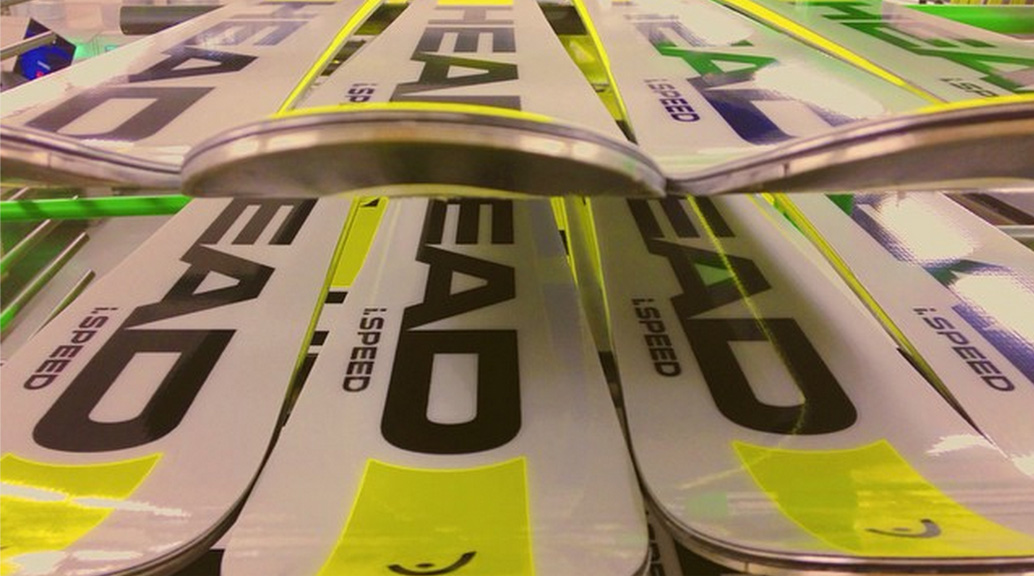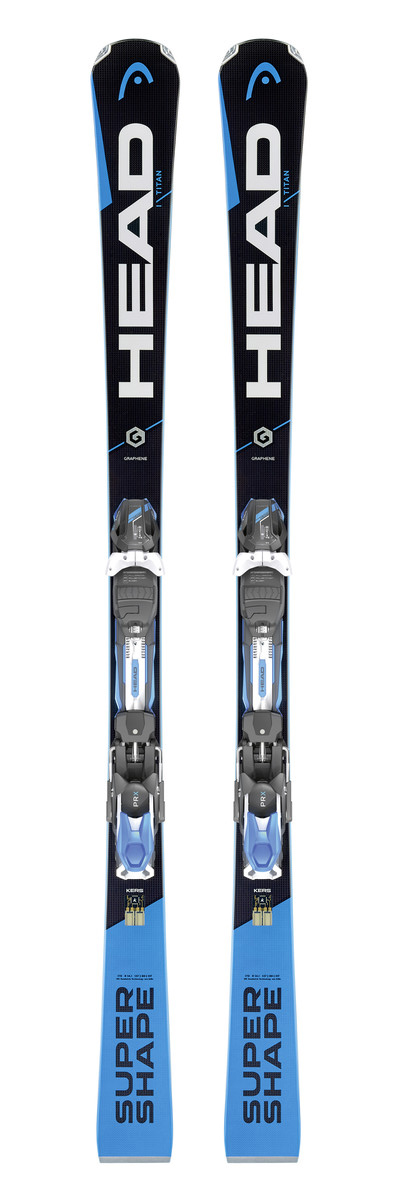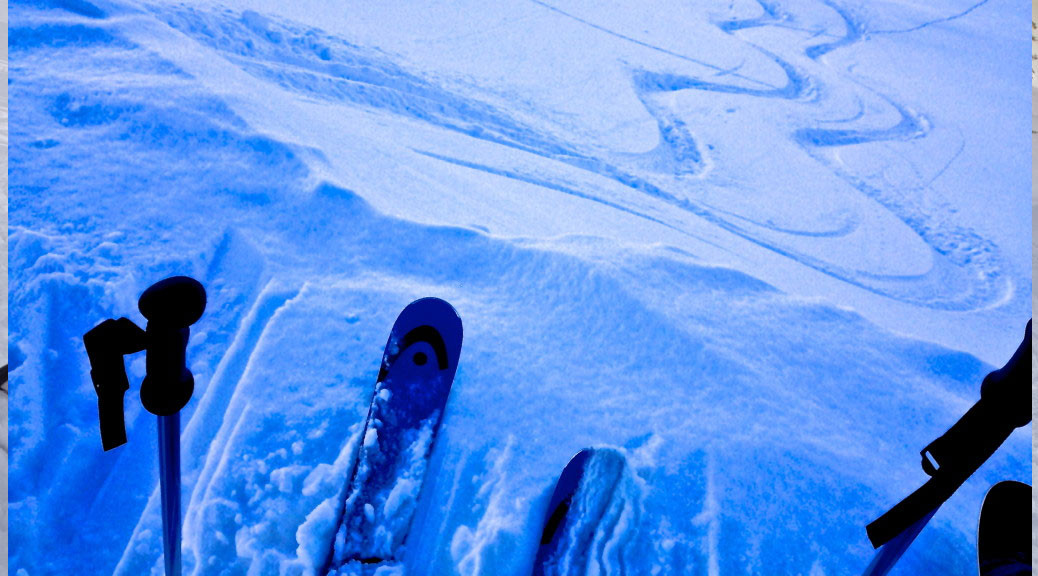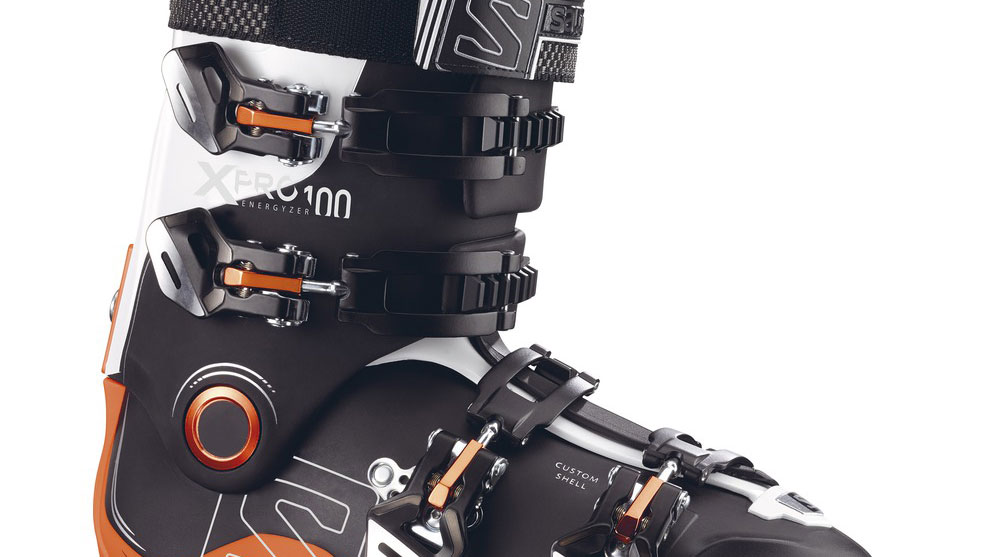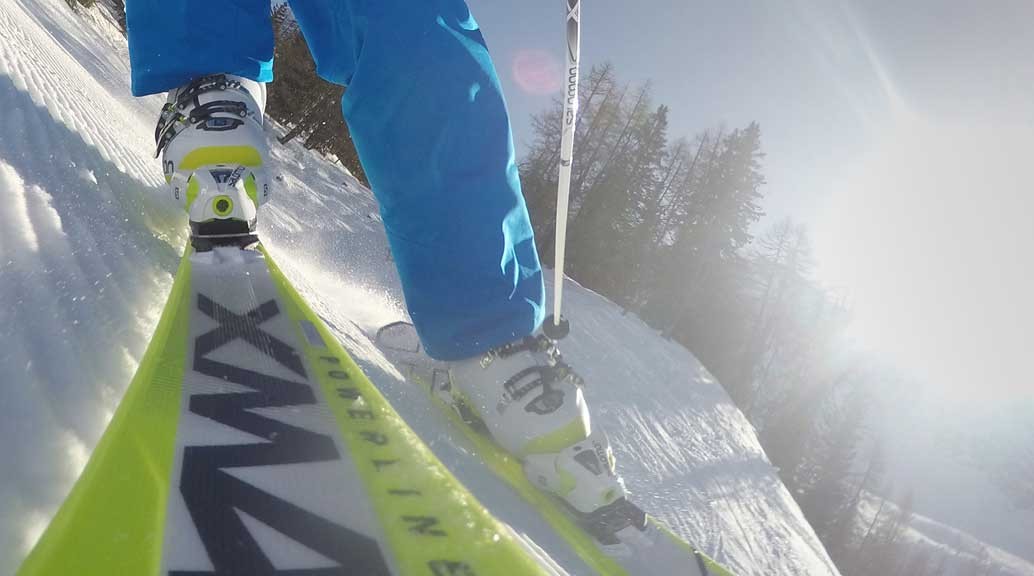As February rolls in and the school holidays start it is inevitable that no matter what resort you happen to be in there will be an influx of people. I take this as an opportunity to go ski touring and explore the backcountry – escaping the crowds!
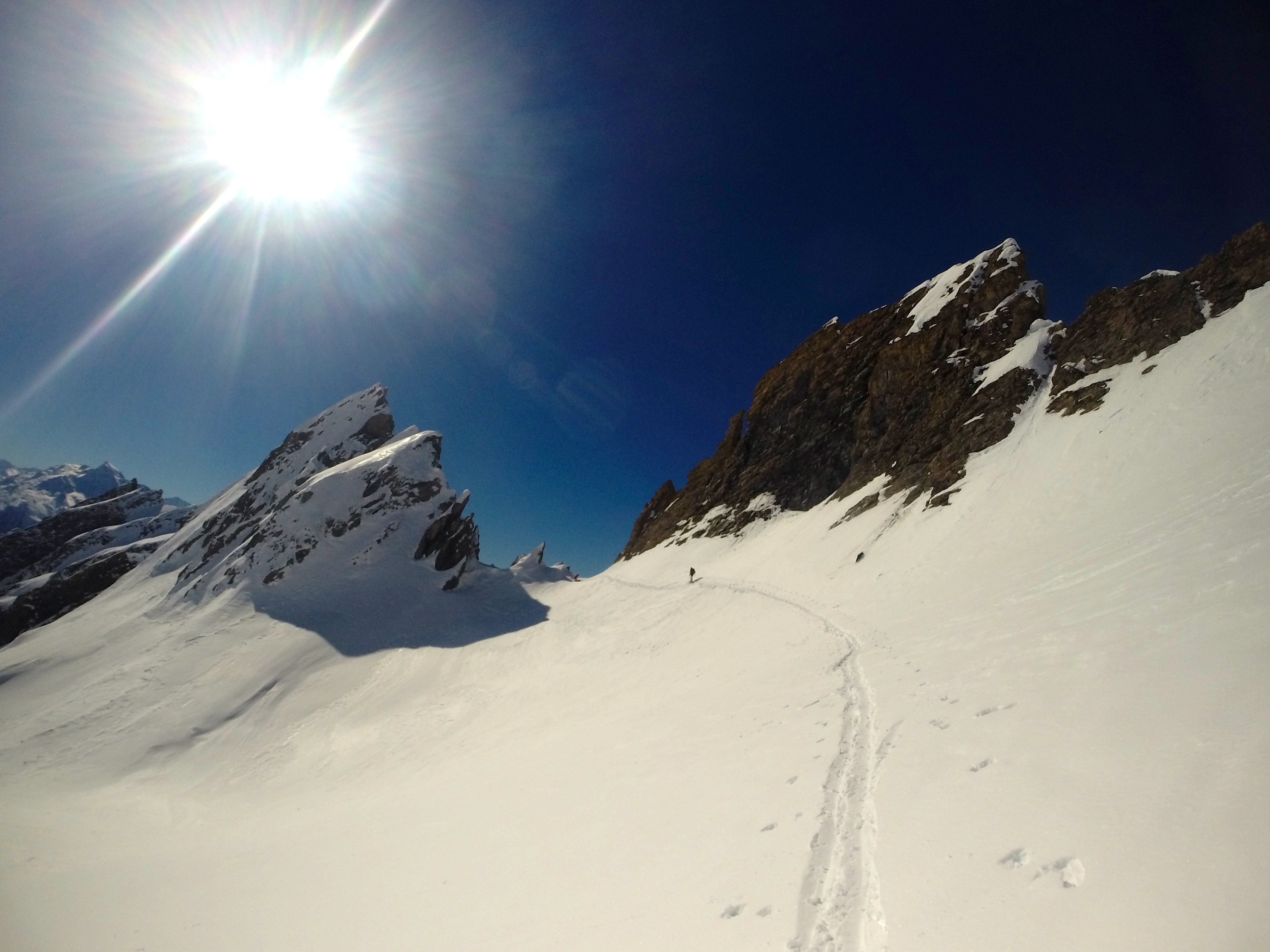
Ski touring is essentially the essence of skiing, to climb and then ski are the very roots of the sport, going down is only one half of the story. The beauty of it is there are no limitations to your journey, you can travel to a new peak, traverse glaciers or ride a dream couloir all accessed by nothing other than your own legs. I have sat on enough chairlifts and heard enough quips about people walking up mountains to understand that initially it may not appeal to everyone however I truly believe that any advanced skier could benefit from experiencing and trying ski touring. In a a life where things are moving so fast and every corner of the globe is getting crowded ski touring offers the alternative. It will test you in every possible way not only is it physically demanding but the preparation into route planning and mountain safety will give you a whole new perspective of the mountains.
“Every step is earned and the value of your achievement is everywhere in your surroundings.”
So as always we meet early, that is the nature of touring, start climbing as soon as you can because you have a long day ahead. The night before I have double checked my bag to make sure all my avalanche safety equipment is packed and ready, the route has been planned and conditions are stable. Our plan will be to reach Montvalazan Peak in the Terantaise Valley and ski the north east face into Italy from France. As we start on the two and a half hour climb the wind is howling straight over the peak into our faces but the skies are clear and we have faith that the wind will be more favourable on the descent. The first stage of the climb is a steady incline along a ridge shadowed by a huge cliff band ahead. When we arrive under the cliff we have to traverse out into the bowl to access the valley leading up to the peak. This is where we can get our first inspection of the snow pack for the climb up. The snow is brutally wind hit with a thin layer covering the icy blue base beneath, in terms of touring this is tricky snow to manoeuvre on and we know we have a challenge ahead. As we zig zag our way up and the gradient becomes steeper it becomes harder to hold an edge and every step requires more effort. In these periods of the climb you are truly testing yourself, it is rare in life to directly pit yourself against something as immovable as a mountain and it is that which also keeps you going. Every step is earned and the value of your achievement is everywhere in your surroundings. No one but your group are there, it is hard, tiring and not for everyone but that is why it is so special.

After an hour we reach the second stage of the ridge from here it a direct climb to the peak. The ridge is exposed especially on the north side but provides phenomenal views of Mont Blanc. Far below us in the valley you can see the huddles of people waiting for chairlifts or pistes looking like roads carved into the mountains. The freedom of being so far away from any infrastructure is truly awe-inspiring and only drives us on. The final part of the climb we have to take our skis off and attach them to our backpacks. It is a steep 50m chute which we have to ladder climb. We are nearing 2900m and have been walking for two hours straight this is the final hurdle.
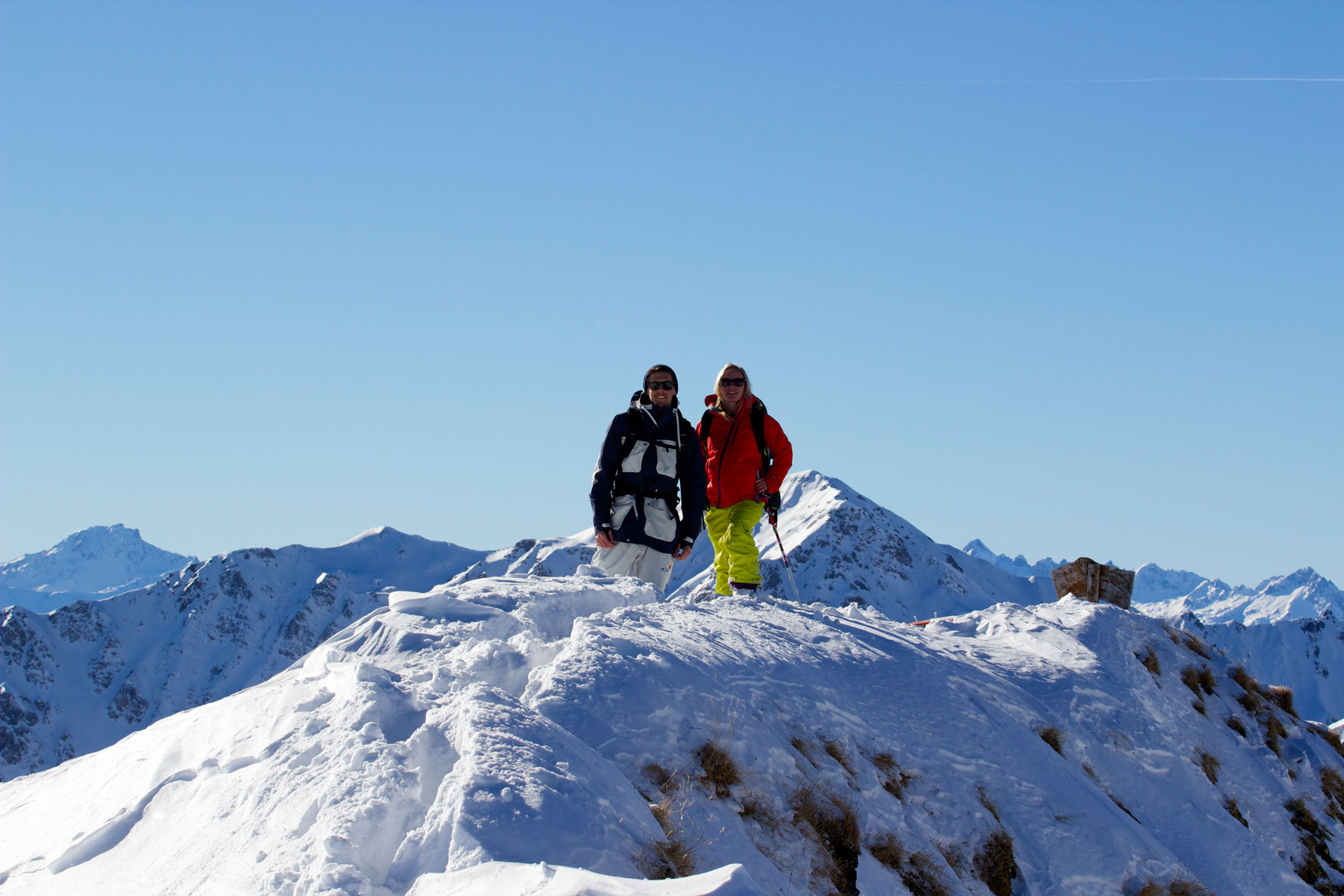
As we reach the summit, there are hugs and handshakes the feeling is truly euphoric a sense of group achievement that is shared only amongst us because no one else is within a square mile and we are 600 vertical metres above the nearest chairlift. As we enjoy lunch there is no urgency, no rush, no one wants to leave. In this environment there is no race, why would there be, I could descend in any direction and would be skiing untracked powder for 5km. In fact all we all want to do is slow down, try and take it in, capture the feeling as much as possible because we know we can only ever be visitors here despite how amazing it is. Then when lunch is finished and flasks are emptied, you pack your bag put your skis on, take one last look and the other half of the story begins…..

